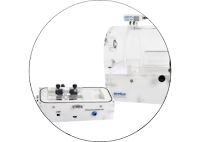Every year, on 31 May, WHO and partners mark World No Tobacco Day (WNTD), highlighting the health and additional risks associated with tobacco use, and advocating for effective policies to reduce tobacco consumption.
The theme for this year's World No Tobacco Day is "Tobacco – a threat to development." It proposes measures that governments and the public should take to promote health and development by confronting the global tobacco crisis.1
The harmful effects of tobacco smoke exposure are well documented. Yet research is still necessary to understand the underlying pathophysiological mechanisms and there is a pressing need for new therapeutic agents to treat patients. Scientific evidence is also needed to understand the risks associated with vapour exposure from electronic cigarettes (e-cigarettes) in order to guide the decision-making process for the use of these nicotine delivery devices. The rapid adoption of e-cigarettes, especially amongst the youth, has spurred a rush to fill the knowledge gap pertaining to the safety profile for the users and the environment.
SCIREQ Related Products for
Tobacco Studies, E-Cigarettes & Vaping
 The inExpose is a versatile, programmable, and compact exposure system that can be configured with smoke generation devices (e.g. cigarette smoking robot, single cigarette chamber, e-cigarettes), or nebulizers to generate a wide range of exposures consistently within and between studies, as well as across laboratories.
The inExpose is a versatile, programmable, and compact exposure system that can be configured with smoke generation devices (e.g. cigarette smoking robot, single cigarette chamber, e-cigarettes), or nebulizers to generate a wide range of exposures consistently within and between studies, as well as across laboratories.  The E-cigarette extension is designed for the push button 3rd generation “MOD” e-cigarettes. This extension allows for longer exposures due to a larger tank, offers automated activation, custom puff profiles, and temperature control of the vapour produced.
The E-cigarette extension is designed for the push button 3rd generation “MOD” e-cigarettes. This extension allows for longer exposures due to a larger tank, offers automated activation, custom puff profiles, and temperature control of the vapour produced.
The flexiVent system combines a wide selection of lung function measurements within a single device, while offering the sensitivity to capture small but significant changes. Overall and detailed respiratory mechanics, specific lung volumes, pressure-volume or flow-volume loops are examples of measurements used in tobacco or e-cigarette related studies with some outcomes (FEV, lung volumes) also having a translational value.
To learn more about our products and how they may provide insight into tobacco related diseases or other applications, please contact [email protected].









